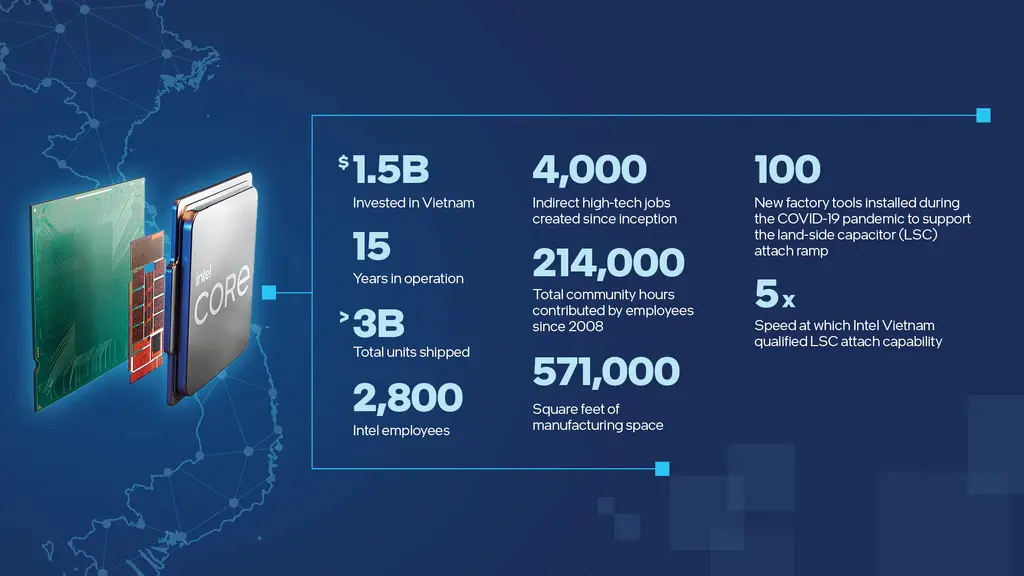In Intel's global semiconductor supply chain, factories in Vietnam are playing an increasingly important role Due to the innovative substrate processing methods adopted by its assembly and test plants, millions of chip production units have been paid in the past year. Against the background of the global shortage of key components, Intel has more room to improve its customers' needs.

Keyvan esfarjani, executive vice president and chief global operations officer of Intel, said: "This initiative is a good example of how integrated manufacturing has become the foundation of Intel's success. Our global factory network and supplier ecosystem have directly realized more adaptive and flexible product supply. In the past year, under the background of the limited substrate of the entire industry, our ability to use internal capacity has created more than $2billion in revenue growth for Intel, enabling us to respond flexibly and meet customers Dynamic requirements for.
Before the computer chip leaves the factory, it is installed between the substrate and the heat sink to form a complete processor. This "encapsulation" protects the chip and forms an electrical connection between the processor and the circuit board in the computer. At first glance, the substrate looks like a thin piece of green plastic. In fact, it consists of about 10 layers of glass fiber, each of which is connected by an intricate metal interconnection network. The silicon chip must be placed within a few microns (a fraction of the thickness of human hair) to align with the electrical connection, allowing the signal to flow from the motherboard through the substrate to the chip and back again.
The key part of the substrate is the capacitor, which is a device that can store charge. Capacitors reduce noise and impedance and maintain a constant voltage on the chip. For many years, Intel has been installing some capacitors on one side of the substrate and relying on the substrate supplier to connect them to the other side. Intel is now connecting these components to both sides of the substrate at its Vietnam assembly and testing (VNAT) plant. In order to realize this function, VNAT team purchased additional tools and modified existing tools specifically for the plant site space to prepare for mass production starting in may2021.
Kim Huat Ooi, vice president and general manager of Intel Vietnam products, said: "This finally proves why integrated manufacturing is beneficial to Intel and our customers. By introducing this capability in-house, we can complete chip assembly at a rate of more than 80% and release substrate suppliers subject to capacity. In the past year, we have proved that this is a scalable manufacturing process with quality matching our substrate suppliers. Looking ahead, we plan to continue to expand capacity, So that this method can be applied to a wider range of products ".
Intel products Vietnam (IPV) is the largest assembly and testing facility in the Intel manufacturing network. With more than 2800 employees and a total investment of US $1.5 billion, it is the largest US high-tech investment in Vietnam. Since it began operation 15 years ago (by the end of 2021), IPV has delivered more than 3billion pieces to Intel's global customers.